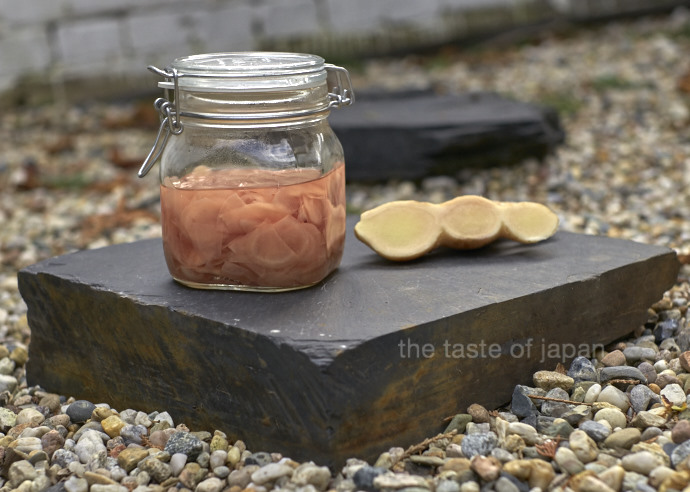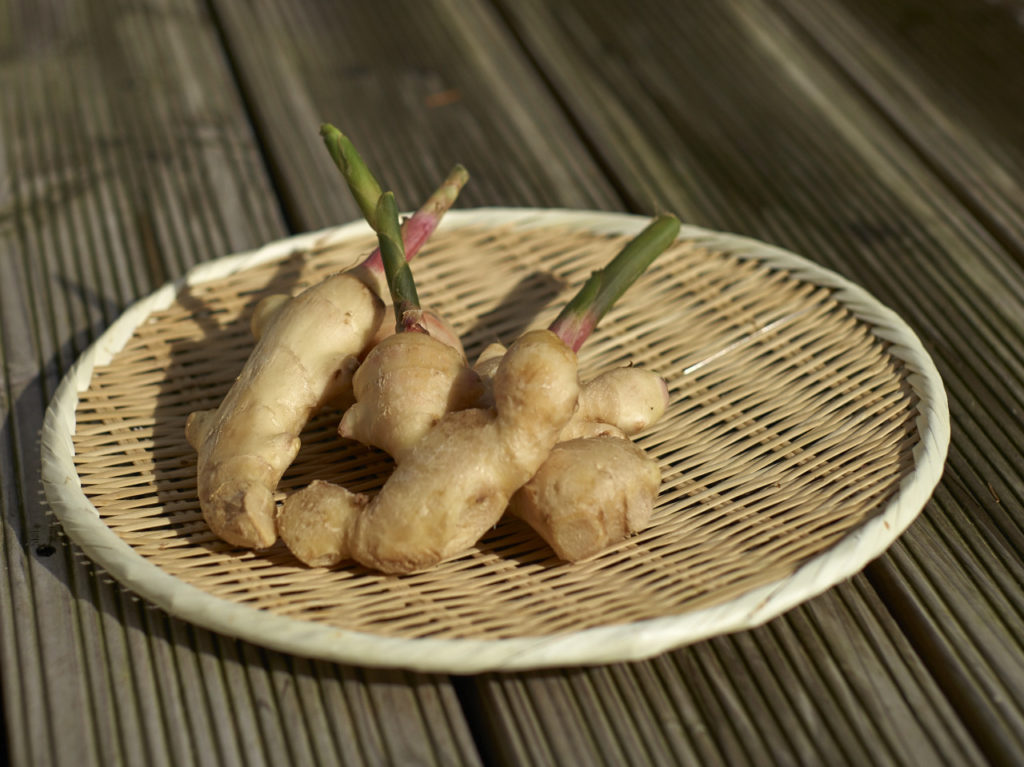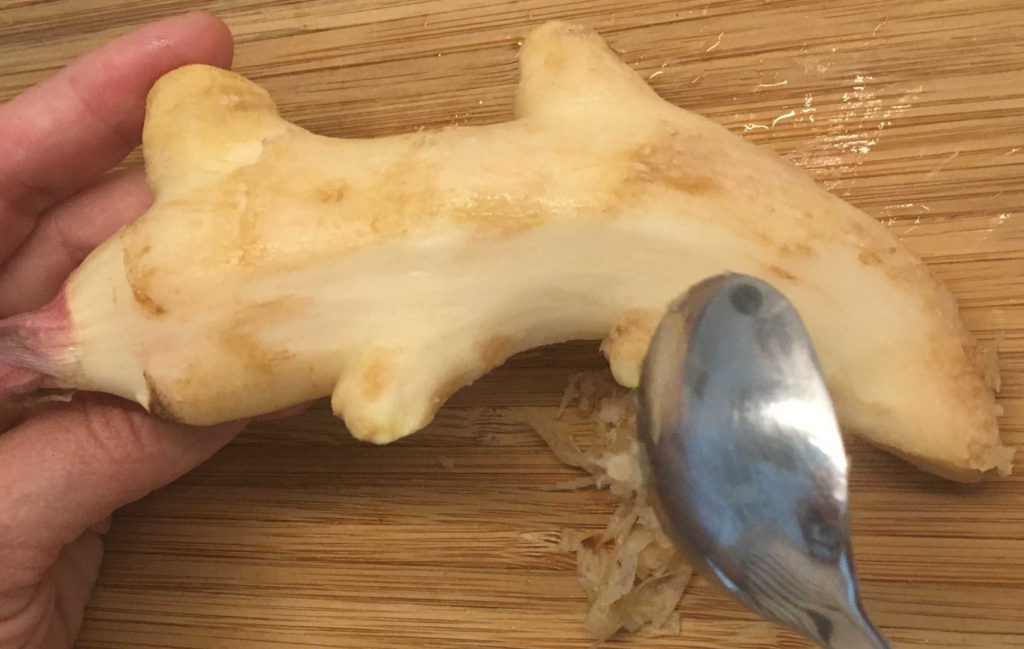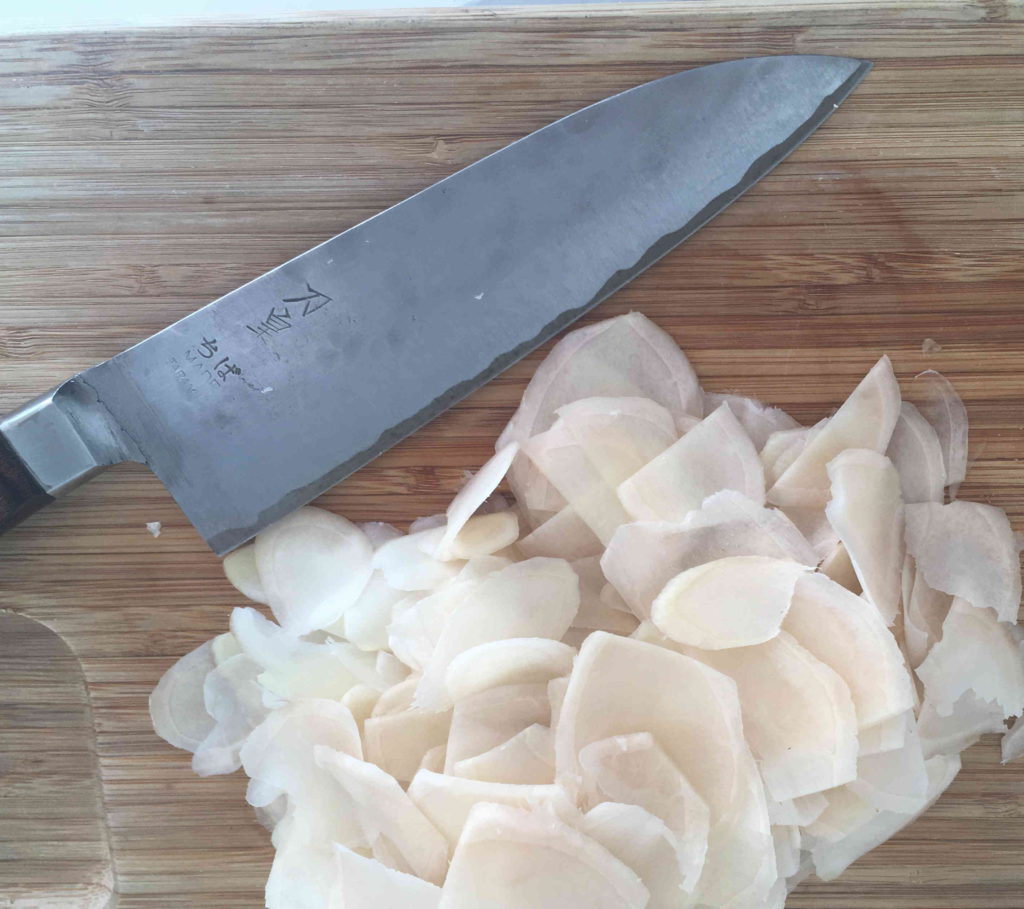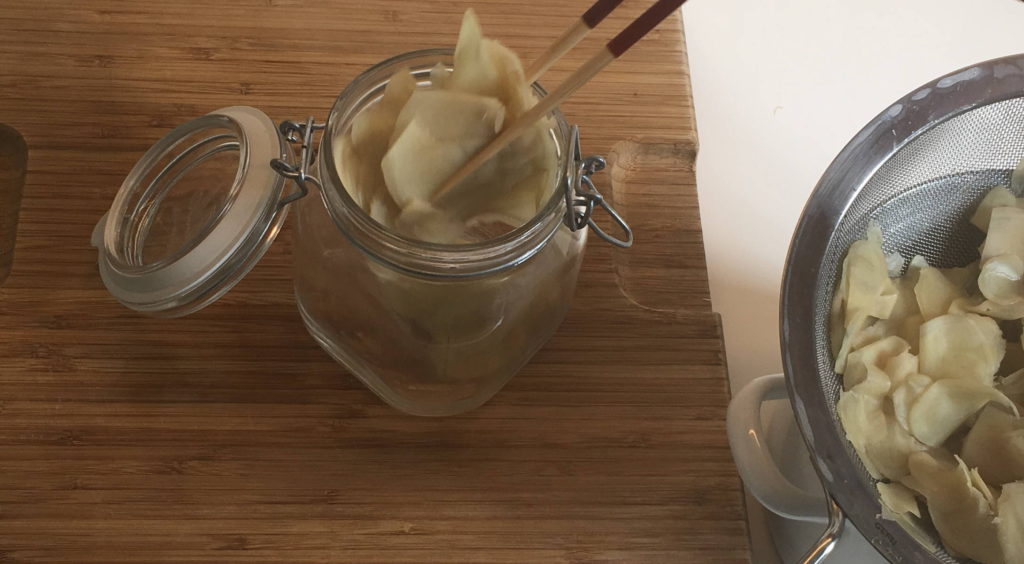Once in a while I need to refill my Japanese pantry and as such I went to my local Asian grocery store. Contrary to the popular belief you don’t need many things for Japanese cooking. Shoyu (soy sauce), sake, mirin (sweet sake), rice vinegar, kombu (seaweed) and if you are not vegan katsuo bushi (bonito flakes) are a good choice.
I don’t buy any convenience products. No teriyaki sauce, no ponzu sauce, instant dashi or similar products. As making them yourself only takes a few minutes, no need to spend the money, but more than that a glimpse on the list of ingredients makes me shiver. They are usually full of additives, flavor enhancer and coloring.
Gari (pickled ginger) or Shin-shoga no Amazu-zuké , that you probably know as a side dish to sushi is no exception. Sushi is so popular that more and more people make it at home, but most of them buy pre-made gari, even though making it is fast, easy and cheap.
All you need for Gari is Young Ginger
In making gari there is one thing mandatory: Young ginger. Young ginger has a mild ginger flavor, is juicier and the flesh is tender compared to matured ginger. The skin is paper-thin and can be scraped off instead of cutting. Young ginger is often sold with parts of the stem that has a red ‘neck’ between the dark green stem and the light yellow root. The season for young ginger in Thailand just started and I already saw the first ones being sold last week.
How does Ginger turn pink?
Gari is available in both colors: yellow and pink. Both types are made with young ginger. The blushing pink develops naturally, if:
- The young ginger contains enough red pigments, meaning enough red ‘necks attached to the root AND
- Either the ginger or the amazu (sweet and sour sauce) is hot when they are combined to activate the pigmentation
Recipe for 1 jar Gari
350 g young ginger
1 clean glass jar
Amazu (sweet-sour sauce):
– 500ml rice vinegar
– 7 Tbsp. caster sugar
– ½ tsp. salt
– ca. 5×10 cm kombu (dried seeweed)
Method
Amazu
Combine rice vinegar, caster sugar, salt and kombu and let them sit of a minimum of 30 minutes. The kombu will soften, give off its umami and melow the acidity of the rice vinegar. I like to use a non-reactivepan for that (lined with teflon or enamel) so that the vinegar and will not get a chance to react with the metal of the pan.
After the soaking heat on medium heat and stir until the sugar and the salt dissolved.
Preparation of the ginger
Scrape off the peel with a spoon or the back of a knife and cut the ginger in paper thin slices. Bring a pot with 1,5-2 l Water to a ruling boil and add the ginger. let it boil for 60 seconds after the water has come back to a boil before you strain it through a sieve.
Pickling the Ginger
Put the hot ginger immediately into the glass jar and fill it up with the amazu. Close the lid and let the ginger pickle in the fridge. If you have enough red pigmentation, the first signs of color will show after about 3-4 hours and the final result will be visible after about 48 hours.
The coloring will be a subtle, light pink. So don’t be disappointed if you don’t get that bright pink that you see in the supermarkets, which is the result of artificial coloring. The color by the way has no influence on the taste. So even if you have yellow gari it will be as tasty.
